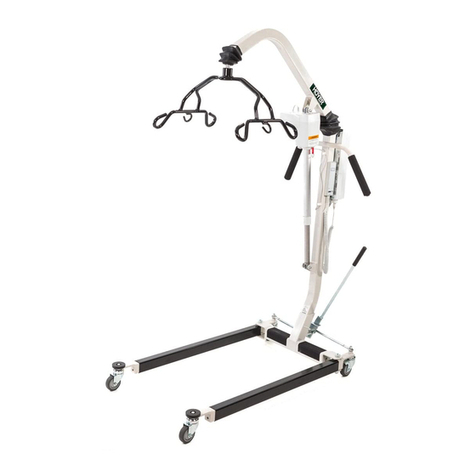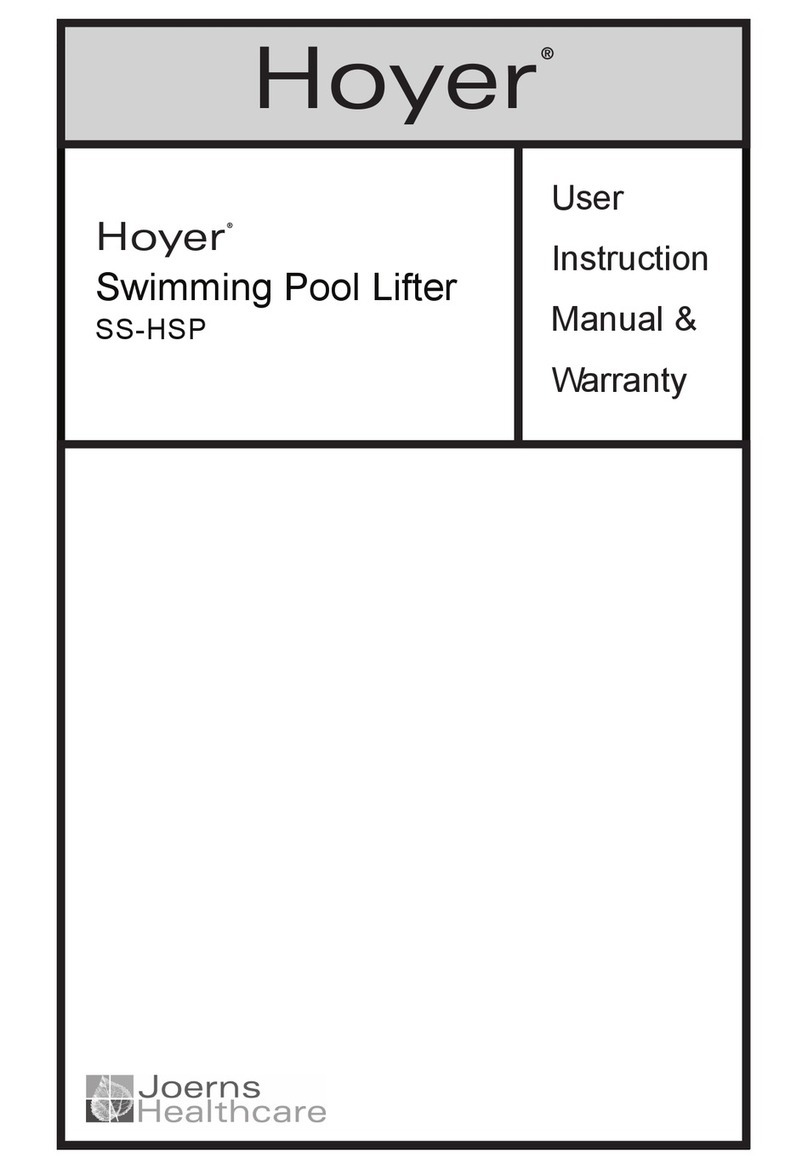5. Operating Instructions
1. Leg adjustment: The legs on the Standaid are adjustable for width. The legs can be
opened to enable access around armchairs or wheelchairs. For transferring and negotiating
narrow doorways and passages the lift legs should be in the closed position. To achieve the
adjustment, the leg adjuster handle, located at the rear of the mast, is moved out, away from
the mast and then sideways from RIGHT (fully closed) to LEFT (fully open). The adjustment
can be carried out with the patient in the lift.
2. Castors and braking: The lift has two braked castors which can be applied for parking.
When lifting, the castors should be left free and unbraked. The lift will then be able to move
to the centre of gravity of the lifting operation. If the brakes are applied it is the patient that
will swing to the centre of gravity and this may prove disconcerting and uncomfortable.
3. Straight line steering (where supplied): One of the rear castors is fitted with a straight
line steering device. To engage the device simply swing the ‘U’ shaped bar over the end of
the leg. There is no need to fit the bar over the castor as it will automatically engage as you
move off.
4. Raising and lowering the boom: The movement of the boom is achieved by a powerful
electric actuator which is controlled by a simple hand control unit. The hand control has two
buttons with directional arrows UP and DOWN. The actuator stops automatically at the limit
of travel in both directions. The hand control plugs into a socket at the base of the control
box. There is a magnetic backing to the hand control which allows it to be “parked” on the
mast or boom when not in use.
5. Emergency stop: The red emergency stop button is located on the control box and
activated by pressing in. This will cut all power to the lift and can only be reset by twisting
the button clockwise and releasing.
6. Emergency raise/lower: The Oxford Standaid is fitted with raise and lower buttons on the
control box. These are located underneath the emergency stop button and can be used to
lower/raise the patient should the hand control fail.
NOTE: These buttons should only be used in the event of an emergency.
7. Batteries: The batteries are protected from deep discharge by a LOW VOLTAGE ALARM.
This will sound when the batteries need recharging and the hand control is being operated.
It will not sound independently of the hand control being operated. DO NOT IGNORE THIS
WARNING ALARM. Complete the lifting operation and place the lift on charge (see charging
instructions).
































